Welcome to Karnataka, where the convergence of tradition and modernity shapes a vibrant tapestry of culture and progress.
However, in the southwestern region of India, Karnataka, formerly known as Mysore, is renowned for its rich heritage and economic dynamism.
Boasting bustling cities like Bengaluru, Mysuru, and Mangaluru, Karnataka invites travelers to explore its diverse landscapes and experiences.
And amidst this dynamic backdrop lie the pivotal hubs of connectivity – the airports in Karnataka.
These gateways facilitate seamless travel within the state and serve as vital conduits for economic growth and tourism.
Furthermore, Karnataka’s airports play a crucial role in fostering regional development, connecting communities, and enhancing accessibility.
So, whether you’re here for business or leisure, Karnataka’s airports stand ready to welcome you to a world of opportunities and exploration.
Kempegowda International Airport, Bengaluru
Covering an expansive area of 4,700 acres, Kempegowda International Airport has been a cornerstone of Bangalore’s aviation landscape since its establishment in 2008.
It is 40 km from the city center and boasts excellent connectivity, making it easily accessible for travelers. Holding the distinction of being the third busiest airport in India, it operates under the ICAO code VOBL and IATA code BLR.
The airport features two terminals, each located around 600 meters apart. Terminal 1, the older of the two, efficiently handles both international airports in Karnataka and domestic airports in Karnataka.
In contrast, Terminal 2, a recent addition, was constructed to cater to the increasing passenger traffic, serving both international and domestic flights. Passengers passing through Kempegowda International Airport can avail themselves of various services and amenities.
From domestic and international lounges to duty-free shopping and childcare facilities, the airport ensures that travelers’ needs are met comprehensively. Additional services include car-calling, currency exchange, medical assistance, and smoking areas.
Mangalore International Airport, Mangalore
Spanning 247.1 acres of land, Mangalore International Airport is India’s second busiest airport. Inaugurated in 1951, it commenced international operations in 2006, establishing itself as a crucial hub for air travel in the region.
With its strategic location just 13 km from the city center, it offers unparalleled convenience to passengers. Mangalore International Airport operates through two terminals operating under the ICAO code VOML and IATA code IXE.
The new airports in Karnataka terminal seamlessly manage domestic and international flights, while the old terminal serves as a gateway for pilgrims visiting the Middle East for Haj.
Like Kempegowda International Airport, Mangalore International Airport provides many amenities and services to enhance the travel experience. From currency exchange and medical facilities to duty-free shopping and prayer rooms, passengers are well-catered throughout their journey.
Additionally, the airport offers services tailored to accommodate disabled passengers, along with smoking areas and the food culture of Karnataka.
Belgaum Airport, Sambara
Belgaum Airport, also called Belagavi Airport, is a vital transportation hub for Karnataka. Nestled in Sambara, it enjoys proximity to the city center, ensuring convenience for travelers.
Operational since 1942, this domestic airport, identified by its ICAO code VOBM and IATA code IXG, prides itself on its robust connectivity.
With a solitary terminal equipped with one boarding gate and six check-in counters, Belgaum Airport efficiently manages arrivals and departures.
Its services and amenities, including a private lounge, wheelchair assistance, free trolleys, medical facilities, and dining options, cater to diverse passenger needs.
Hubballi Airport, Hubballi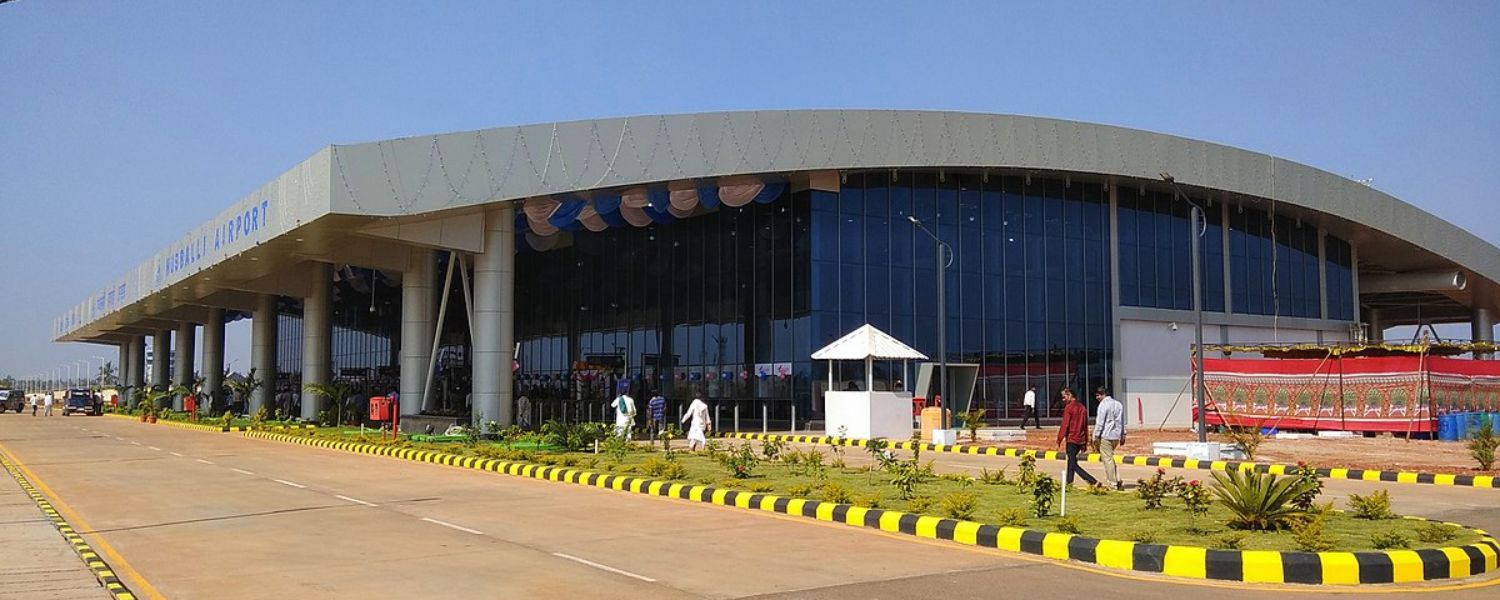
Hubballi Airport, situated in Hubballi, plays a pivotal role in Karnataka’s air transport network. Serving Hubli and Dharwad, this domestic airport, identified by its ICAO code VOHB and IATA code HBX, commenced operations in 1954.
Its recent expansion has resulted in a modern passenger terminal spanning 3600 square meters, accommodating up to 300 passengers simultaneously.
Additionally, the cargo terminal, covering 65 square meters, efficiently handles cargo operational airports in Karnataka.
Travelers at Hubballi Airport benefit from an array of amenities, including dining options, medical assistance, wheelchair facilities, lost and found services, a childcare room, and a robust public address system.
Mysore Airport, Mysore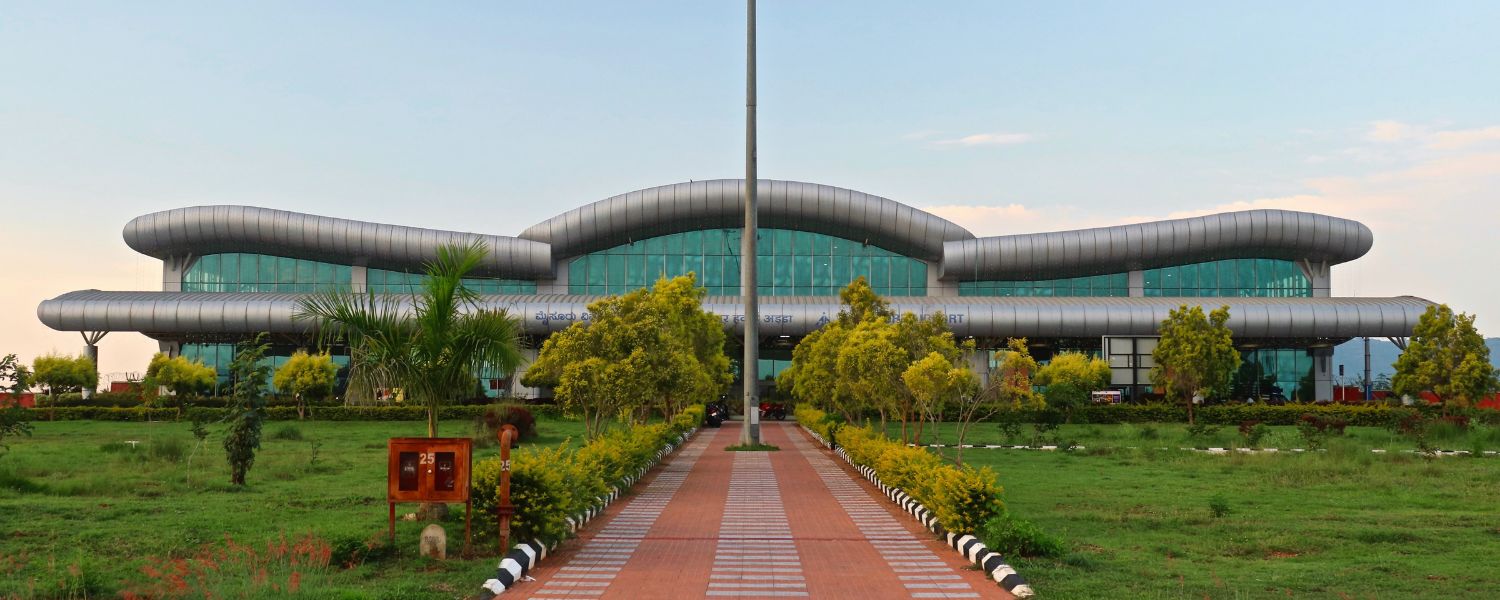
Established in 1940, Mysore Airport stands as one of Karnataka’s key aerial gateways. Situated just 12 km from the heart of Mysore city, it is a vital hub for domestic flights.
Despite its historical significance, Mysore Airport is undergoing developments, with plans for runway expansion to accommodate larger jet aircraft. Bearing the ICAO code VOMY and IATA code MYQ, this domestic airport operates from a single terminal building.
Despite its modest size, the terminal efficiently caters to around 200 passengers. Travelers can enjoy various services and amenities, including a private lounge, duty-free shopping outlets, complimentary trolleys, medical assistance, and wheelchair facilities.
Kalaburagi Airport, Kalaburagi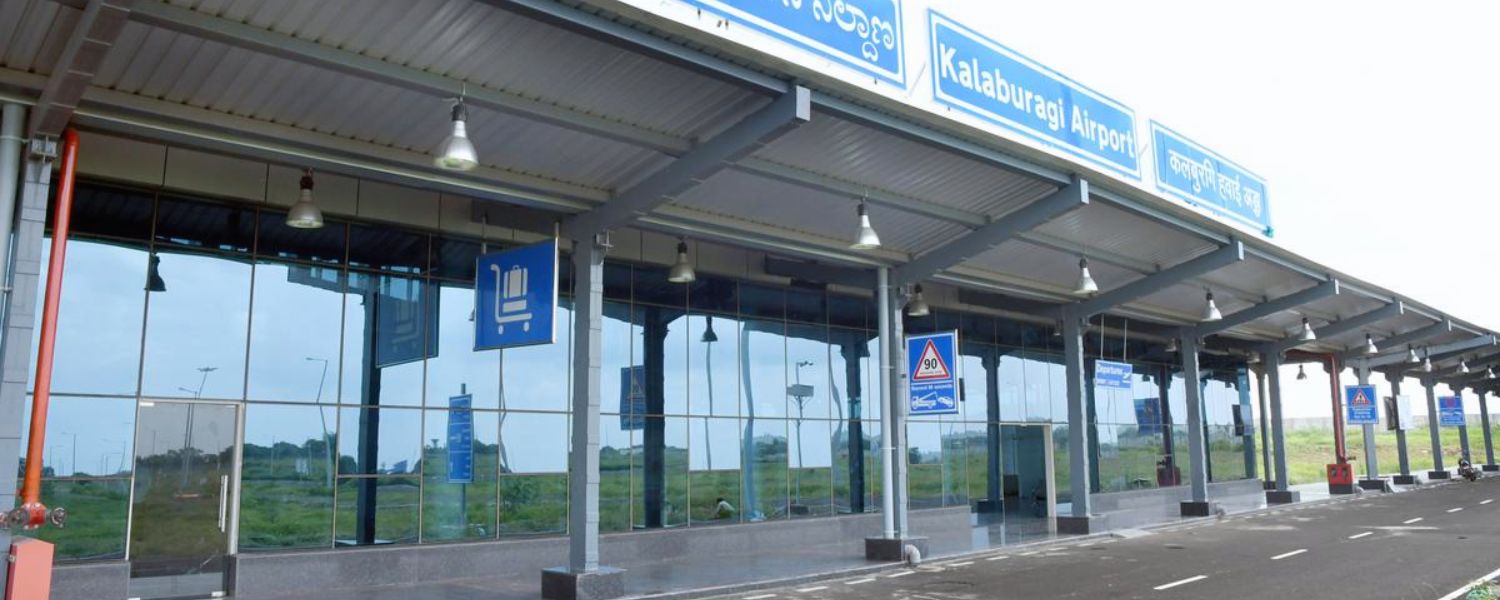
Inaugurated in 2019 by the then Chief Minister of Karnataka, B. S. Yediyurappa, Kalaburagi Airport is a relatively newer addition to the state’s aviation infrastructure. Positioned 12 km from the city center, it boasts convenient accessibility for travelers.
While still under construction, the airport’s lone terminal promises to be a vital hub for domestic flights, carrying the ICAO code VOGB and IATA code GBI.
Despite its ongoing development, Kalaburagi Airport already provides essential services such as medical assistance, a lost and found service, and basic food facilities.
Jindal Vijayanagar Airport, Toranagallu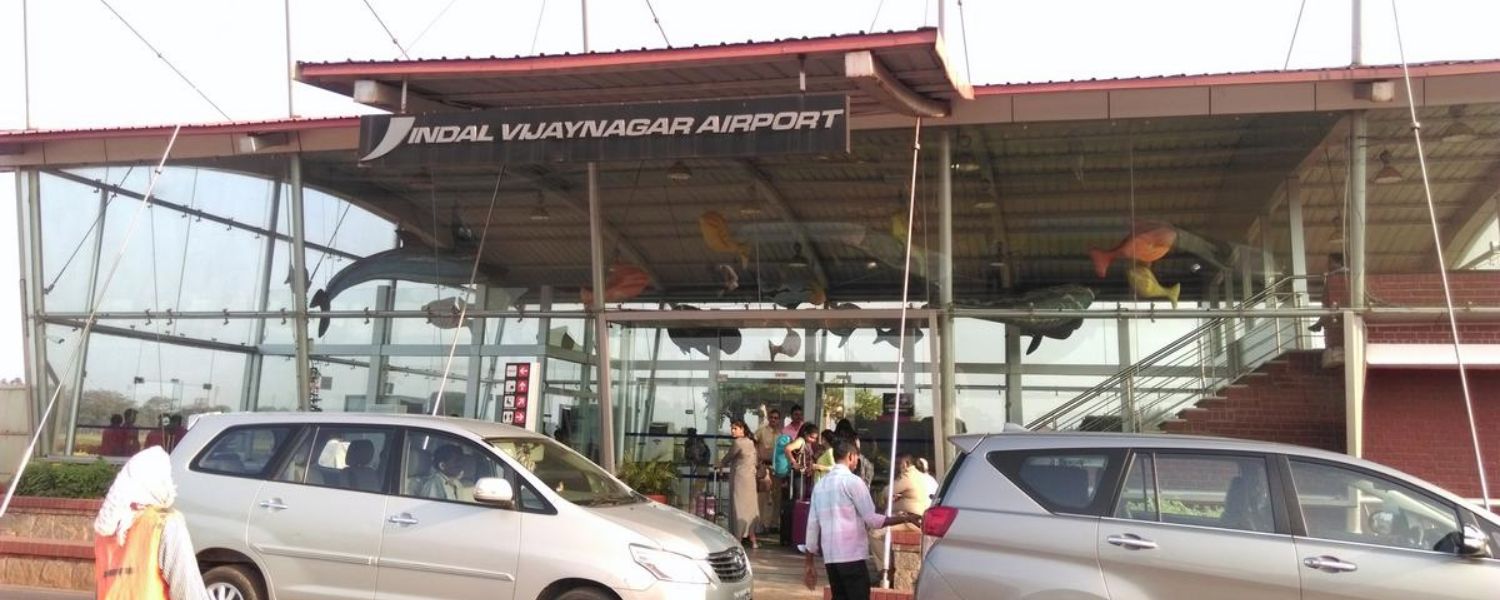
Jindal Vijayanagar Airport, also known as Vidyanagar Airport, commenced its commercial flight operations in 2004.
Situated just 5 km from Toranagallu, this airport has received substantial investment, with the JSW group injecting ₹48 crores over the past three years for expansion and runway upgrades.
Its ICAO code is VOJV, and its IATA code is VDY. Classified as a domestic airport, it boasts a single terminal building catering to all flights, equipped with a singular check-in desk, baggage scanner, and security lane.
Besides the standard services like food facilities, duty-free shops, and lost and found facilities, passengers can also avail themselves of free trolleys and medical services.
Bidar Airport, Bidar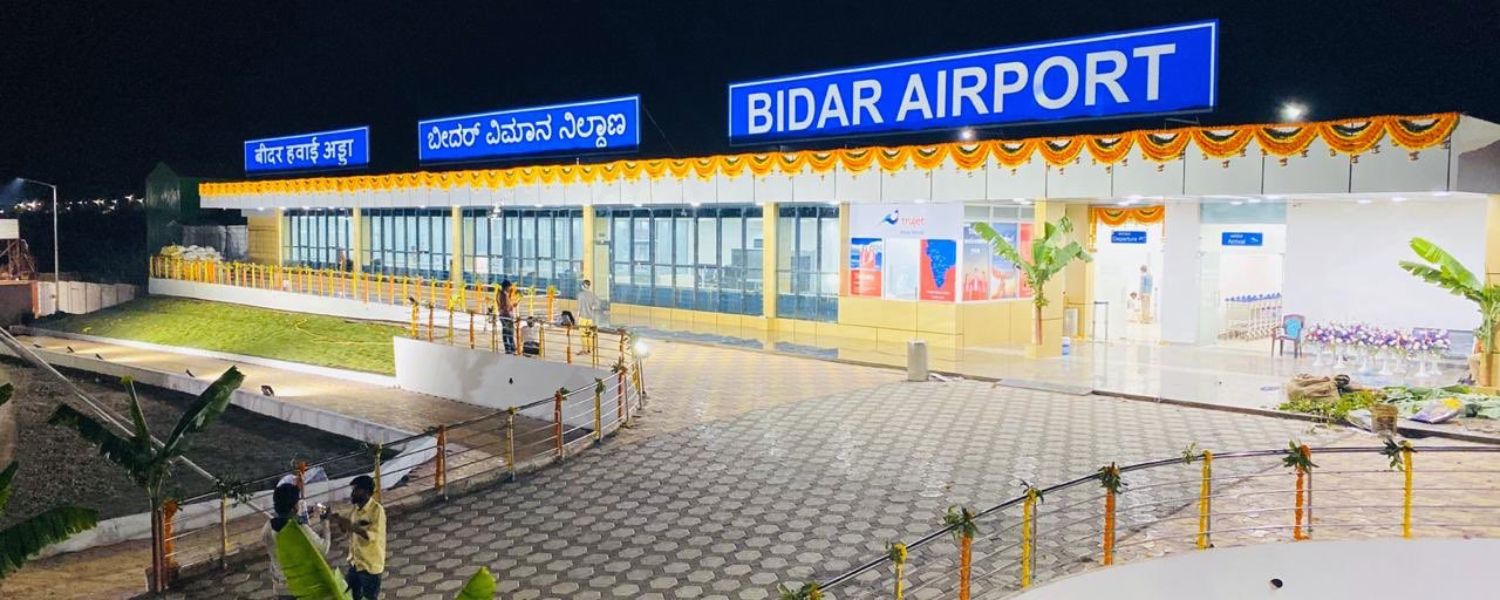
Alternatively known as Bidar Air Force Station, Bidar Airport is situated 5 km away from Bidar. Established during World War II, it has been a pivotal training center for Indian Air Force pilots since the early 1960s.
Despite its military roots, a civilian terminal was constructed in 2008-2009, marking its accessibility to civilian air traffic. In addition to its historical significance and the army function, Bidar Airport now serves civilian passengers, connecting them to various destinations.
By providing essential services and infrastructure, both Jindal Vijayanagar Airport and Bidar Airport contribute significantly to Karnataka’s air travel network, facilitating connectivity within and beyond.
Yelahanka Air Force Station, Yelahanka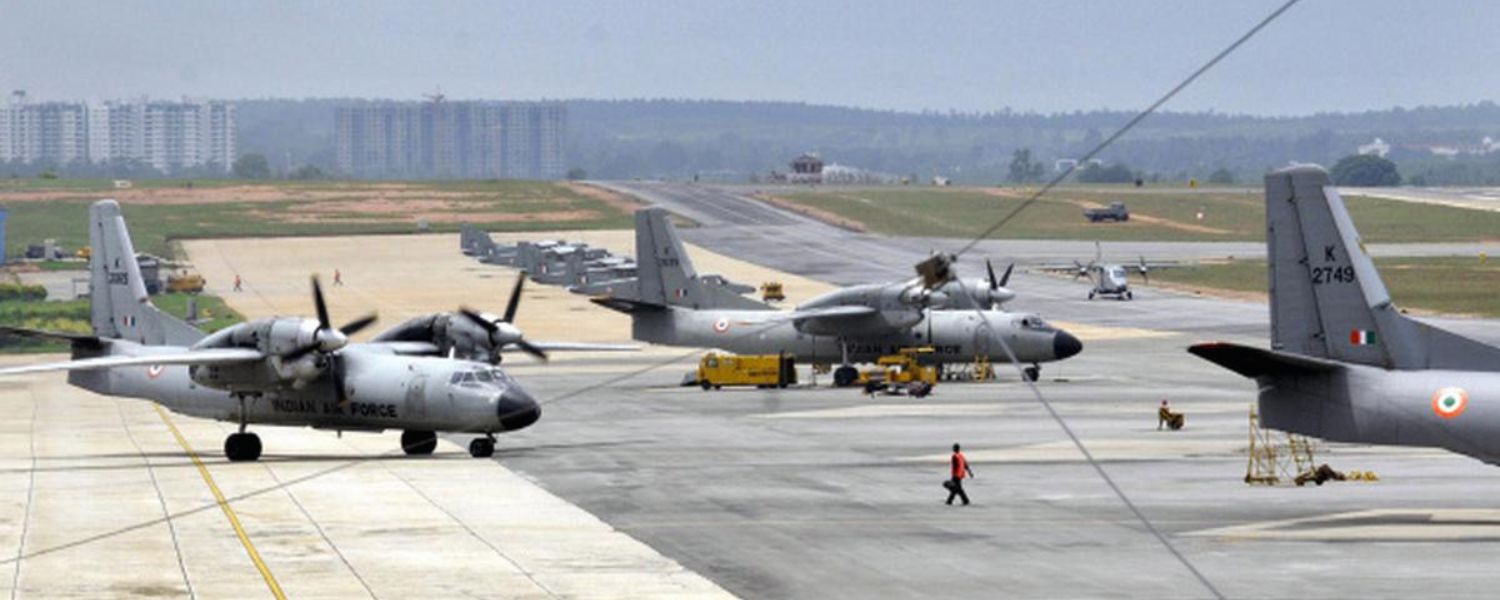
Yelahanka Indian Air Force Station, located approximately 22 km from Bengaluru’s city center, is a testament to the nation’s aerial defense prowess.
Established on August 1, 1963, this defense-based airport is pivotal in pilot training, logistics support tasks, and navigators’ type conversion.
While it doesn’t cater to commercial flights, its significance in bolstering the country’s air defense capabilities cannot be overstated.
HAL Bangalore Airport, Bengaluru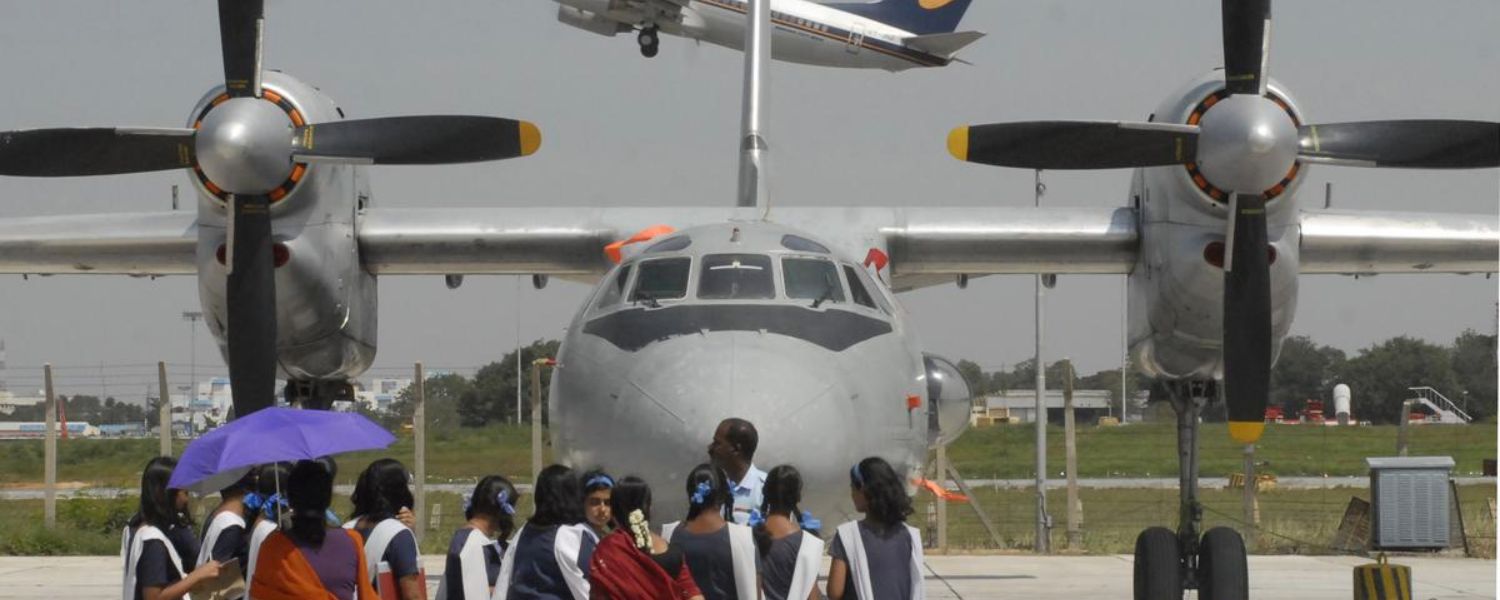
Formerly known as Hindustan Airport or HAL Airport, the HAL airports in Bangalore is about 12 km away from Bengaluru’s bustling cityscape.
Since its inception in 1941, this defense-based airport has served as the country’s premier aircraft factory and offers various services vital for aviation operations.
Although its passenger terminals are no longer operational, the airport continues to provide critical services such as aircraft rescue, fire-fighting services, ground handling, and HAL cargo complex operations.
Shivamogga Airport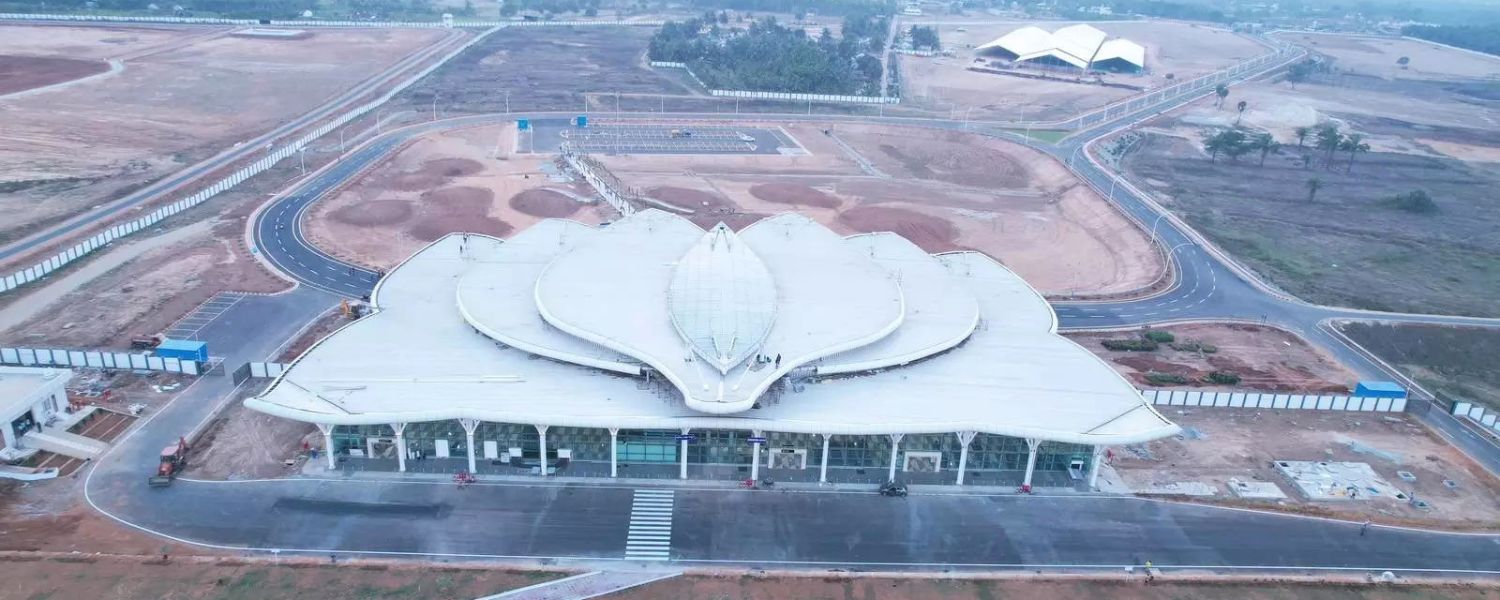
Shivamogga Airport, located approximately 6 km from the city center, is nearing completion. This domestic airport will link Karnataka’s aviation network, fostering seamless travel to and from Chennai, Hyderabad, Delhi, and Mumbai.
With an estimated cost of ₹384 crores, the project encompasses essential features such as a taxiway, apron, isolation bay, and a domestic terminal building.
Jagatjyoti Shri Basaveshwar Airport
Jagatjyoti Shri Basaveshwar Airport, also known as Vijayapura Airport, is another ambitious endeavor to enhance Karnataka’s air infrastructure.
Situated 15 km from the city center, this greenfield airport spans 727 acres. With an increased investment of ₹347 crores, the project aims to extend the runway and incorporate additional facilities to cater to the region’s growing aviation needs.
Hassan Airport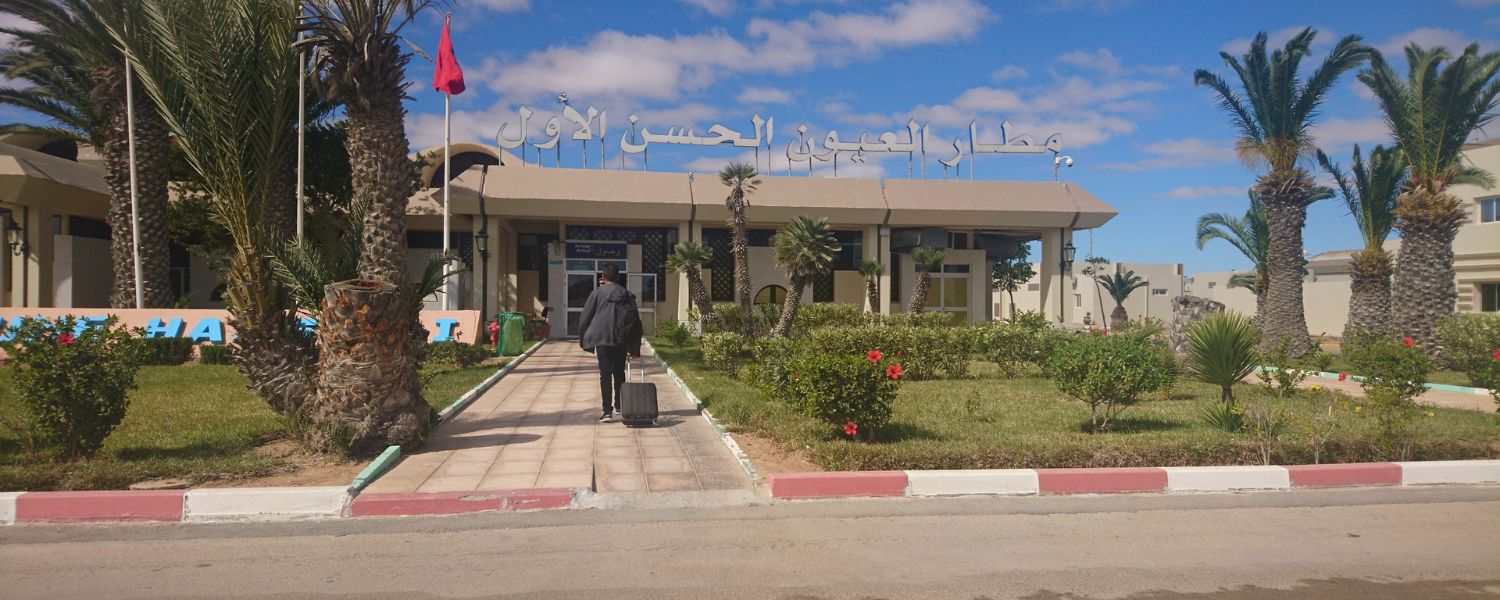
Hassan Airport, an upcoming greenfield venture, is under construction by India’s Airports Authority. Spanning 536 acres, this airport is slated to accommodate up to 200 passengers upon completion, with an estimated investment of ₹193 crores.
Expected to be operational by the end of 2023, it promises to enhance regional connectivity.
Karwar Airport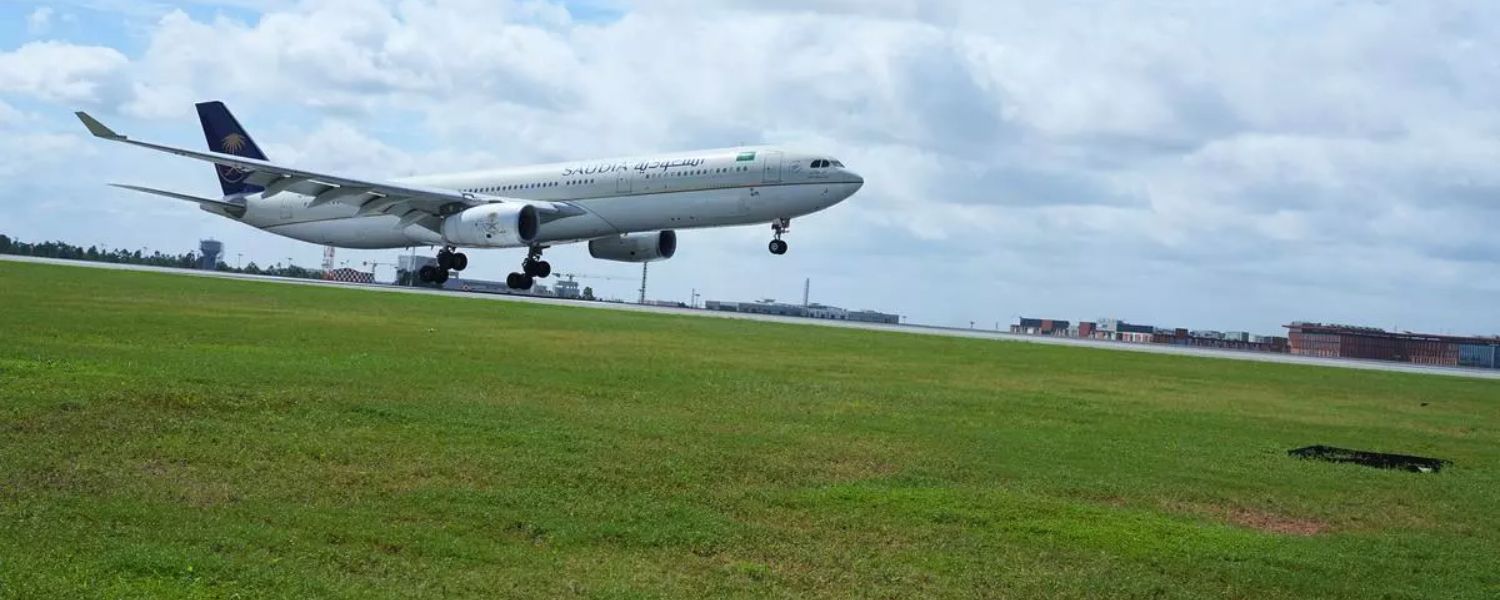
Karwar Airport is a project spearheaded by the Karnataka government. Covering an area of 97.1 acres in the Karwar district, this airport is poised to feature a compact terminal building and a functional runway. Scheduled for completion in 2024, it is set to bolster commercial aviation prospects in the vicinity.
Raichur Airport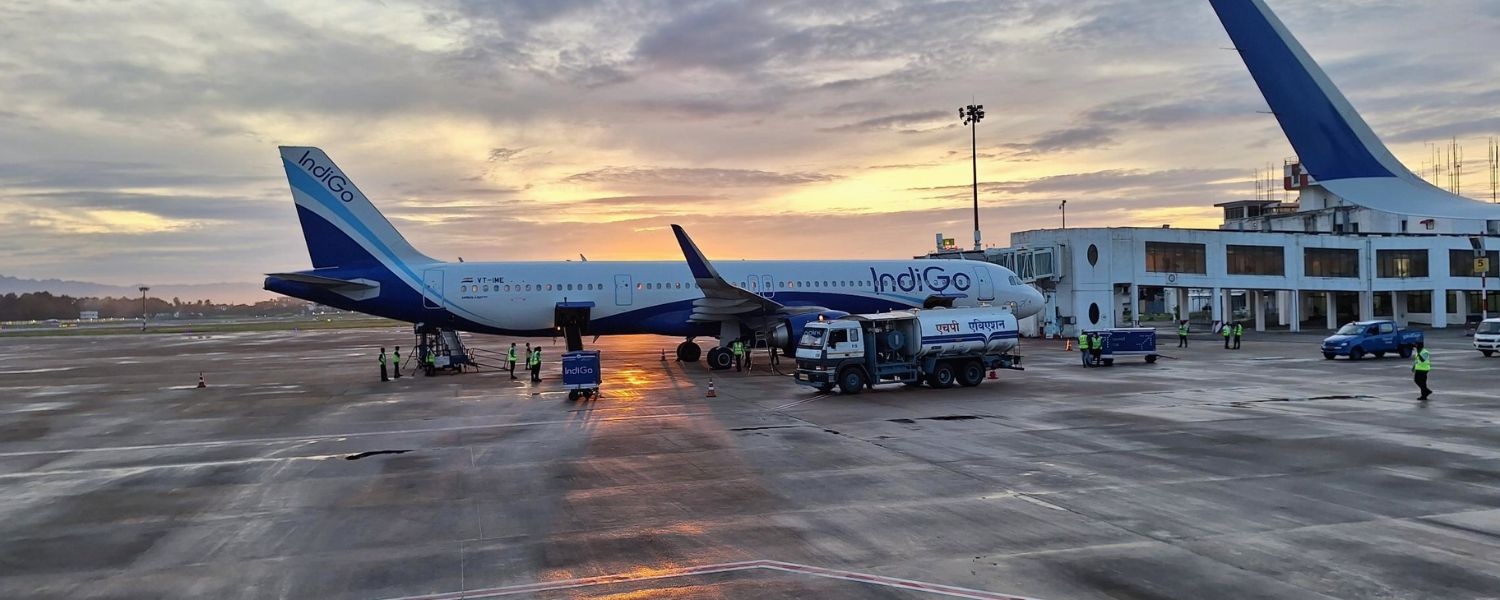
The proposal for Raichur Airport underscores Karnataka’s commitment to bolstering its air transportation network. With an earmarked investment of ₹185.57 crores spread across 400 acres, this project holds promise for the region’s connectivity.
Though the construction timeline is yet to be confirmed, the groundwork signifies progress towards enhancing Karnataka’s aviation infrastructure.
Conclusion
In conclusion, airports in Karnataka serve as pivotal gateways, facilitating seamless travel experiences and contributing significantly to the state’s economic development and tourism sector.
From the bustling Kempegowda International Airport in Bengaluru to the strategically located Mangalore International Airport, these aviation hubs offer many services and amenities to passengers.
Moreover, Karnataka’s air infrastructure is poised for further expansion and enhancement with ongoing and upcoming projects like Shivamogga, Jagatjyoti Shri Basaveshwar, and Hassan airports.
As these airports continue to evolve, they connect communities and propel Karnataka towards a future of enhanced accessibility and regional connectivity.
So whether for business or leisure, travelers can rely on the airports in Karnataka 2024 to embark on journeys filled with convenience and opportunity.
FAQ
Q: How many airports are in Karnataka?
A: Karnataka boasts eight operational airports with scheduled commercial flights. Two cater to domestic and international sectors, while the rest serve regional/domestic routes.
Q: Does Bangalore have two airports?
A: Yes, indeed. Bangalore has two airports. The Kempegowda International Airport (BLR) is the primary one, inaugurated in May 2008, designed to alleviate congestion at HAL Airport.
Q: Which is the oldest airport in Karnataka?
A: Bellary Airport holds this prestigious title, with its history dating back to 1932. It played a significant role in India’s aviation journey, witnessing the inaugural commercial flight from Karachi to Madras.
Q: Which is the biggest airport in Karnataka?
A: The largest airport in Karnataka is the Kempegowda International Airport in Bengaluru. Covering a vast area of 4,700 acres, it has been serving Bangalore since 2008.










